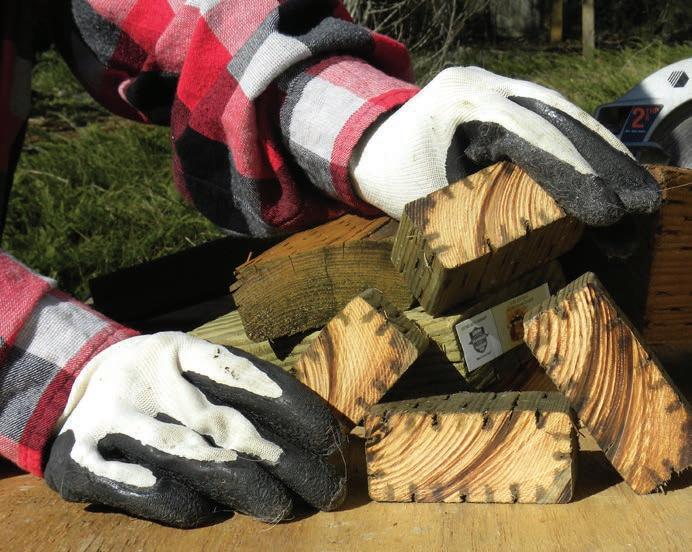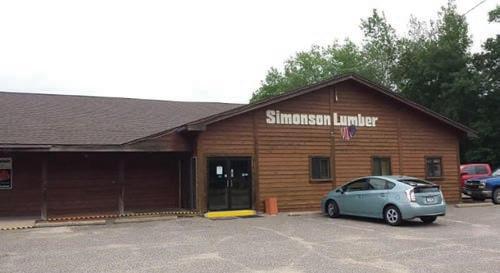
4 minute read
TREATED WOOD WASTE
By Western Wood Preservers Institute
Treated wood scraps like this were classi ed as hazardous waste in California in January, making disposal much more di cult. The state is implementing a new variance program that could allow Treated Wood Waste to be disposed of in approved land lls as has been done for nearly 20 years.
THERE ARE NOW some answers to the question of what to do with Treated Wood Waste (TWW) in California.
The state started 2021 by classifying TWW as hazardous waste that could only be disposed in a Class I Hazardous Waste land ll, with only one facility near Bakers eld that could accept the waste. That action ended alternative management standards for TWW that were in place for nearly two decades, allowing TWW to be safely disposed in approved composite-lined land lls.
In mid-February, the state Department of Toxic Substance Control (DTSC) began accepting applications for variances that allow TWW to be disposed in composite-lined land lls, as before.
Under the DTSC program, there are three types of variances that can be utilized by residents and businesses to dispose TWW: • Transporter Variance: This is for contractors and transporters who do not accumulate or consolidate TWW at any location. The TWW generated must go directly from job site to an approved land ll or transfer station. Cost of the variance is $785.31 with unlimited sites. This variance is expected to be used by decking and fencing contractors. • Small Quantity Generator Variance: This variance is for entities that do not exceed 10,000 lbs. of TWW per calendar year. Cost of the variance is $971.53 for one site, with an additional cost of $756.70 per site up to 10. • Large Quantity Generator Variance: This variance is for entities that exceed 10,000 lbs. of TWW per calendar year. Base cost is $1,012.14 for one site, with an additional cost of $797.31 per site up to 10. Companies must have a federal or state EPA ID number to receive this variance.
All TWW generators and transporters must have a variance when they show up to the land ll or transfer station and should check to ensure the land ll or transfer station has a variance to receive TWW.
Lumberyards in California should be aware that if they cut treated wood, they are classi ed as a generator and are required to have a variance to properly dispose of the waste.
There is an exception to the variance program that allows homeowners without a variance to take up to 50 lbs. of TWW to approved land lls.
Western Wood Preservers Institute (WWPI) has prepared an infographic to help guide businesses to determine the proper variances needed. It can be downloaded at wwpi.info/ TWW_variance. More information on the variance program and to apply, go to the DTSC website at dtsc.ca.gov/
treated-wood-waste-variances.
DTSC has indicated the variance program is only a temporary solution and has limited variances to six months, with a possible six-month extension. Work is now underway to pass an urgency bill, Assembly Bill 332, that would reinstate the alternative management standards, including disposal of TWW in Class II and III composite-lined land lls.
The changes in TWW disposal were unexpected, given the success of the previous alterative standards. WWPI notes a DTSC report in 2019 con rmed that 93% of TWW generators had no substantial infractions that would “represent signi cant threat to human health or safety or the environment.”
Dallin Brooks, executive director of WWPI, said preserved wood is important for the 10 million single-family homes, thousands of businesses, and scores of state agencies that use the products.
“We support the proper handling and disposal of preservative-treated wood and we encourage all businesses to research and apply for the variance that ts their situation,” said Brooks.
California is the only state in the U.S. that restricts the disposal of Treated Wood Waste (TWW). Many believe the state has some misplaced concerns about the risk of TWW to the environment.
The U.S. Environmental Protection Agency, which de nes hazardous waste in regulations under the Resources Conservation and Recovery Act (RCRA), does not list treated wood waste as hazardous. While other states restrict some uses of treated wood, most often near water or sensitive environment, they allow treated wood to be disposed the same as all other wood products.
Dallin Brooks, executive director of WWPI, notes that preservatives for residential products, required by codes for decks and outdoor structure, are mostly copper based and will fail state toxicity tests due to the presence of copper. However, infrastructure preservatives such as creosote used in railway ties may pass such tests, which would allow them to be disposed as non-hazardous waste.
Brooks says concerns over copper, which is used in a host of products ranging from cooking pans to hot water pipes, are overstated when considering the amount of copper in a preserved wood product.
“Just to put it into perspective, a 12-foot 2x6 that weighs about 30 lbs. has 0.0991 lbs. of copper in it,” Brooks said. “That’s less than the amount of copper in a single silver-plated fork or spoon, and less than a shaving o a piece of copper water pipe.”
Preserved wood has a long record of safe use and disposal in the state, Brooks said, as con rmed by the alternative management standards for TWW waste that have been in place in California for nearly two decades.
He said reinstating the alternative standards for disposing of TWW is both reasonable and safe. “California has ensured safe disposal of TWW for nearly 20 years,” he said. “We’re con dent that can continue.”











